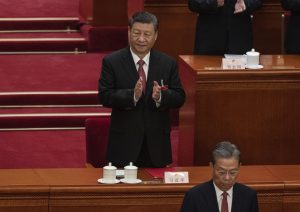In 2024, Iran’s position in the Middle East has significantly weakened, with setbacks in key areas such as Gaza, Lebanon, and Syria. The loss in Syria, where the Assad regime—once a critical ally—collapsed, was particularly damaging. This development, combined with Iran’s shrinking influence in the region, has left the Islamic Republic with fewer allies. The Axis of Resistance, once bolstered by strong regional powers, is now reduced to scattered militias in Iraq and the impoverished Houthi tribe in Yemen.
At home, Iran is facing an even more dire situation. The economy is at its lowest point since the 1979 Revolution, with soaring levels of poverty and widespread malnutrition. As the Iranian rial plummets, the country’s financial crisis deepens, leading to massive losses for ordinary citizens. The government, instead of addressing the economic challenges, has focused on consolidating power, threatening those who speak out against the regime.
Fuel prices in Iran, which have been heavily subsidized, are now unsustainable due to the rial’s devaluation. The government is planning price hikes, which could trigger more unrest like the 2019 Bloody November protests. As Iran struggles with fuel shortages and electricity cuts, the once oil-rich nation now faces an energy crisis, exacerbated by sanctions and decades of underinvestment in its oil and gas sectors.

Iran Faces Regional Decline and Economic Crisis Amid Political Instability and External Pressures
In response to growing domestic unrest, the regime has enacted harsh laws, such as the new hijab law targeting women, a reaction to the “Women, Life, Freedom” protests sparked by Mahsa Amini’s death. The protests, which spread to over 200 cities and saw hundreds killed, posed one of the most significant threats to the regime’s stability since its inception. The new law, if enforced, risks reigniting widespread protests that could further destabilize the government.
The regime’s ability to maintain control is also under question as external pressures increase. Israel has launched several attacks against Iran, targeting its missile and air defense infrastructure, while Iran’s retaliatory strikes have been largely ineffective. This has led to growing discontent among regime supporters, who are beginning to question the leadership’s competence in protecting the country from foreign aggression.
Finally, the issue of succession has become a pressing concern as Supreme Leader Ali Khamenei, now 85 years old and reportedly in poor health, faces potential leadership instability. His leadership has been marked by a weakening of his physical and political authority. With the regime grappling with internal divisions and external defeats, the prospect of a power vacuum looms large, making the future of the Islamic Republic uncertain.























